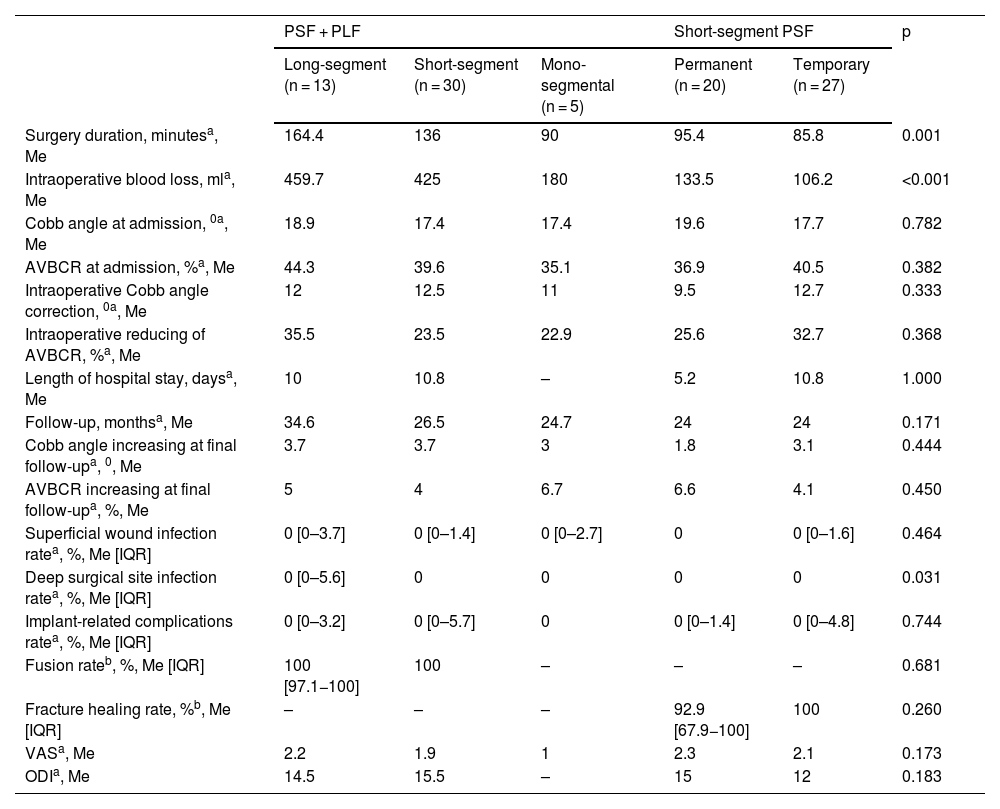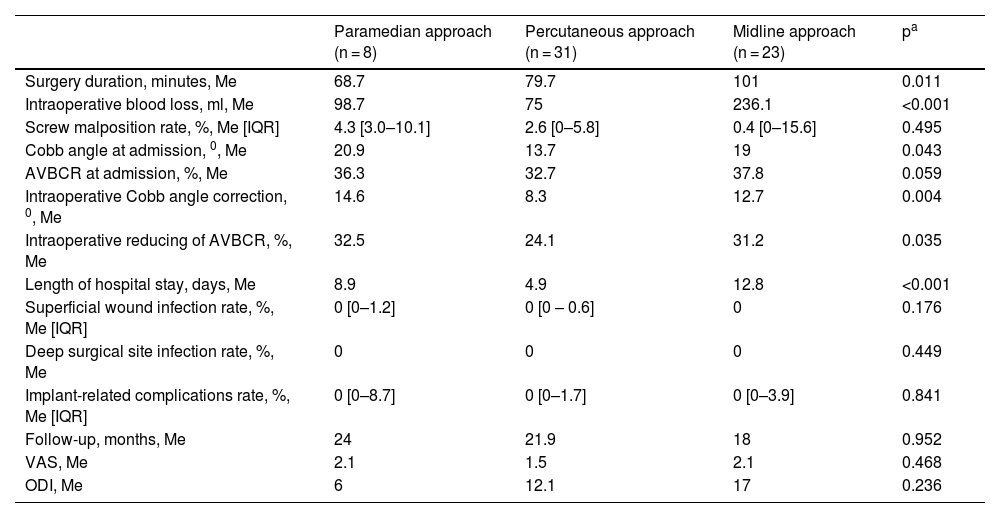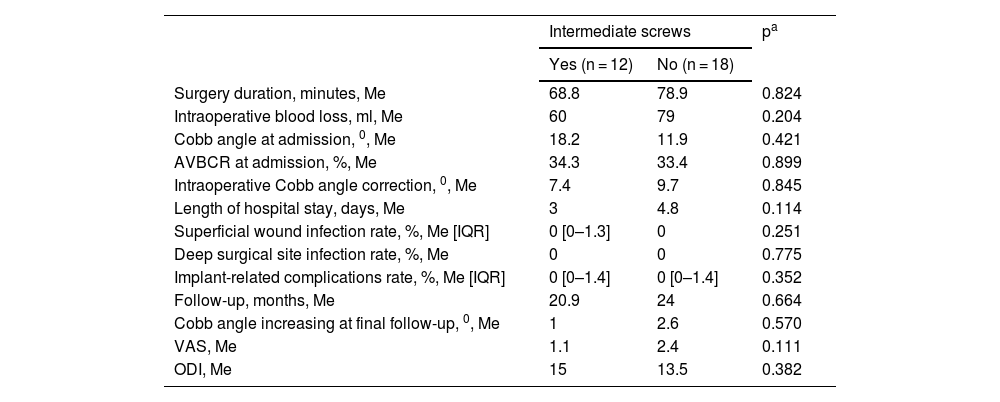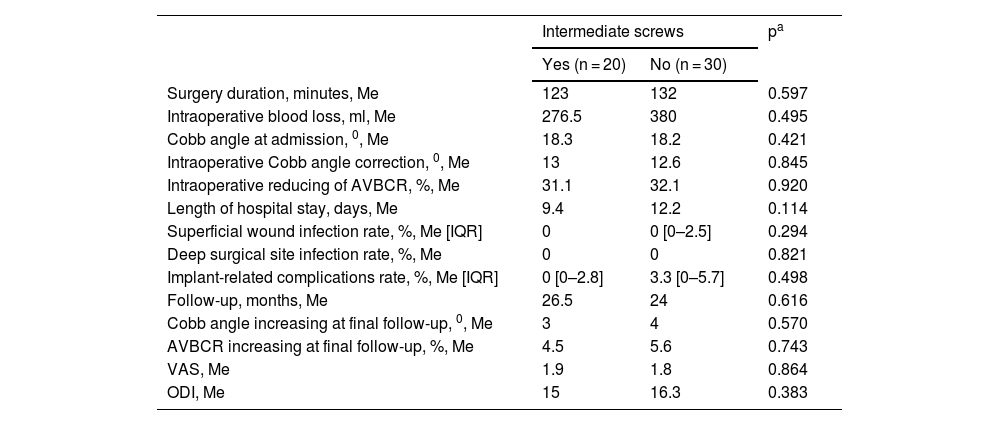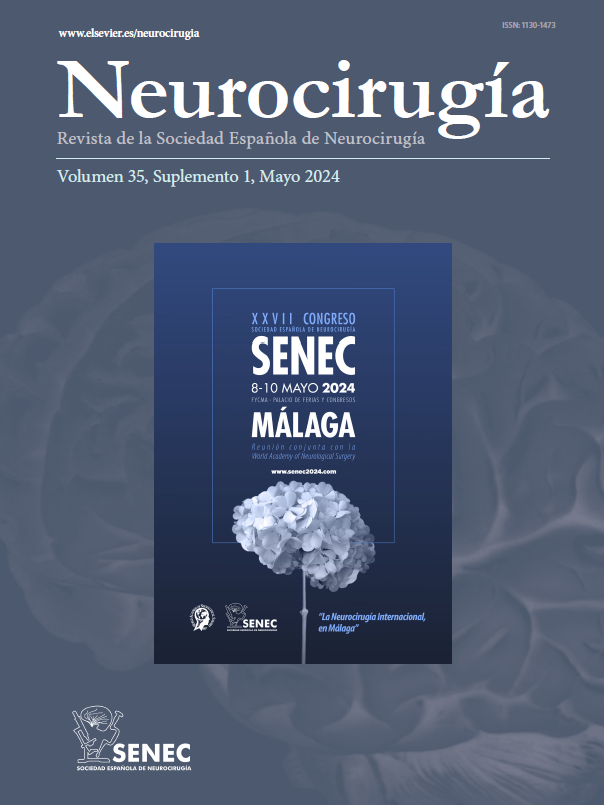To conduct a systematic review of studies on various posterior pedicle screw fixation (PSF) methods used for treating neurologically intact thoracolumbar burst fractures and to identify the most effective and safe approaches.
MethodsWe conducted a systematic review adhering to the Preferred Reporting Items for Systematic Reviews and Meta-Analyses (PRISMA) guidelines, with the study registered in PROSPERO (CRD42024531093). The inclusion criteria were: (1) publication dates from January 1, 2004, to December 31, 2023; (2) availability of full-text articles in English; (3) thoracolumbar burst fractures without neurological deficits; (4) patients aged over 18; (5) reports on treatment outcomes or complications; (6) a mean follow-up period of at least 12 months.
ResultsA total of 69 articles covering 116 patient groups were included. Our analysis highlighted the advantages of short-segment fixation without fusion over monosegmental, short-segment and long-segment fusion in terms of shorter operation times and reduced intraoperative blood loss (p = 0.001 and p < 0.001, respectively). Extensive fusion was associated with a significantly higher frequency of deep surgical site infections compared to other PSF methods (p = 0.043). Percutaneous pedicle screw fixation, applied to patients with lower body compression rates and kyphotic deformities, led to less potential for correction (p = 0.004), yet significantly decreased blood loss (p = 0.011), operation duration (p < 0.0001), and hospitalization duration (p < 0.0001). No significant benefits were observed with the use of additional intermediate screws in short-segment PSF.
ConclusionsShort-segment pedicle screw fixation could be the optimal surgical treatment method for neurologically intact thoracolumbar burst fractures. The use of posterior lateral fusion in this context may increase the deep surgical site infection rate without reducing the frequency of implant-related complications or improving long-term treatment outcomes. The percutaneous approach remains the preferred technique; however, its limited reduction capabilities should be carefully considered during surgical planning for patients with severe kyphotic deformities. The application of intermediate screws in such patients has not demonstrated significant advantages. Removing the fixation system has not led to a significant decrease in implant-related complications or improvement in quality of life. The data obtained from the systematic review may assist surgeons in selecting the most appropriate surgical treatment method for patients with neurologically intact thoracolumbar burst fractures, thereby avoiding ineffective procedures and improving both short-term and long-term outcomes.
Realizar una revisión sistemática de estudios sobre diversos métodos de fijación con tornillo pedicular posterior (FTP) utilizados para tratar fracturas por estallido toracolumbares sin déficits neurológicos e identificar los enfoques más efectivos y seguros.
MétodosLlevamos a cabo una revisión sistemática siguiendo las pautas de los Ítems Preferidos para Revisiones Sistemáticas y Meta-Análisis (PRISMA), con el estudio registrado en PROSPERO (CRD42024531093). Los criterios de inclusión fueron: (1) fechas de publicación desde el 1 de enero de 2004 hasta el 31 de diciembre de 2023; (2) disponibilidad de artículos completos en inglés; (3) fracturas por estallido toracolumbares sin déficits neurológicos; (4) pacientes mayores de 18 años; (5) informes sobre resultados del tratamiento o complicaciones; 6 un período de seguimiento promedio de al menos 12 meses.
ResultadosSe incluyeron un total de 69 artículos que cubren 116 grupos de pacientes. Nuestro análisis destacó las ventajas de la fijación de segmento corto sin fusión sobre la fusión monosegmentaria, de segmento corto y de segmento largo en términos de tiempos de operación más cortos y menor pérdida de sangre intraoperatoria (p = 0.001 y p < 0.001, respectivamente). La fusión extensa se asoció con una frecuencia significativamente mayor de infecciones profundas del sitio quirúrgico en comparación con otros métodos de FTP (p = 0.043). La fijación percutánea de tornillo pedicular, aplicada a pacientes con tasas de compresión corporal baja y deformidades cifóticas, condujo a un menor potencial de corrección (p = 0.004), sin embargo, disminuyó significativamente la pérdida de sangre (p = 0.011), la duración de la operación (p < 0.0001) y la duración de la hospitalización (p < 0.0001). No se observaron beneficios significativos con el uso de tornillos intermedios adicionales en FTP de segmento corto.
ConclusionesLa fijación con tornillo pedicular de segmento corto podría ser el método de tratamiento quirúrgico óptimo para fracturas por estallido toracolumbares neurológicamente intactas. El uso de fusión lateral posterior en este contexto puede aumentar la tasa de infecciones del sitio quirúrgico profundo sin reducir la frecuencia de complicaciones relacionadas con el implante ni mejorar los resultados del tratamiento a largo plazo. La técnica percutánea sigue siendo preferida; sin embargo, sus capacidades limitadas de reducción deben considerarse cuidadosamente durante la planificación quirúrgica para pacientes con deformidades cifóticas graves. La aplicación de tornillos intermedios en tales pacientes no ha demostrado ventajas significativas. La retirada del sistema de fijación no ha conducido a una disminución significativa de las complicaciones relacionadas con el implante ni a una mejora en la calidad de vida. Los datos obtenidos de la revisión sistemática pueden ayudar a los cirujanos a seleccionar el método de tratamiento quirúrgico más adecuado para pacientes con fracturas estallido toracolumbares sin déficits neurológicos, evitando procedimientos ineficaces y mejorando tanto los resultados a corto como a largo plazo.
Article

If it is the first time you have accessed you can obtain your credentials by contacting Elsevier Spain in suscripciones@elsevier.com or by calling our Customer Service at902 88 87 40 if you are calling from Spain or at +34 932 418 800 (from 9 to 18h., GMT + 1) if you are calling outside of Spain.
If you already have your login data, please click here .
If you have forgotten your password you can you can recover it by clicking here and selecting the option ¿I have forgotten my password¿.




